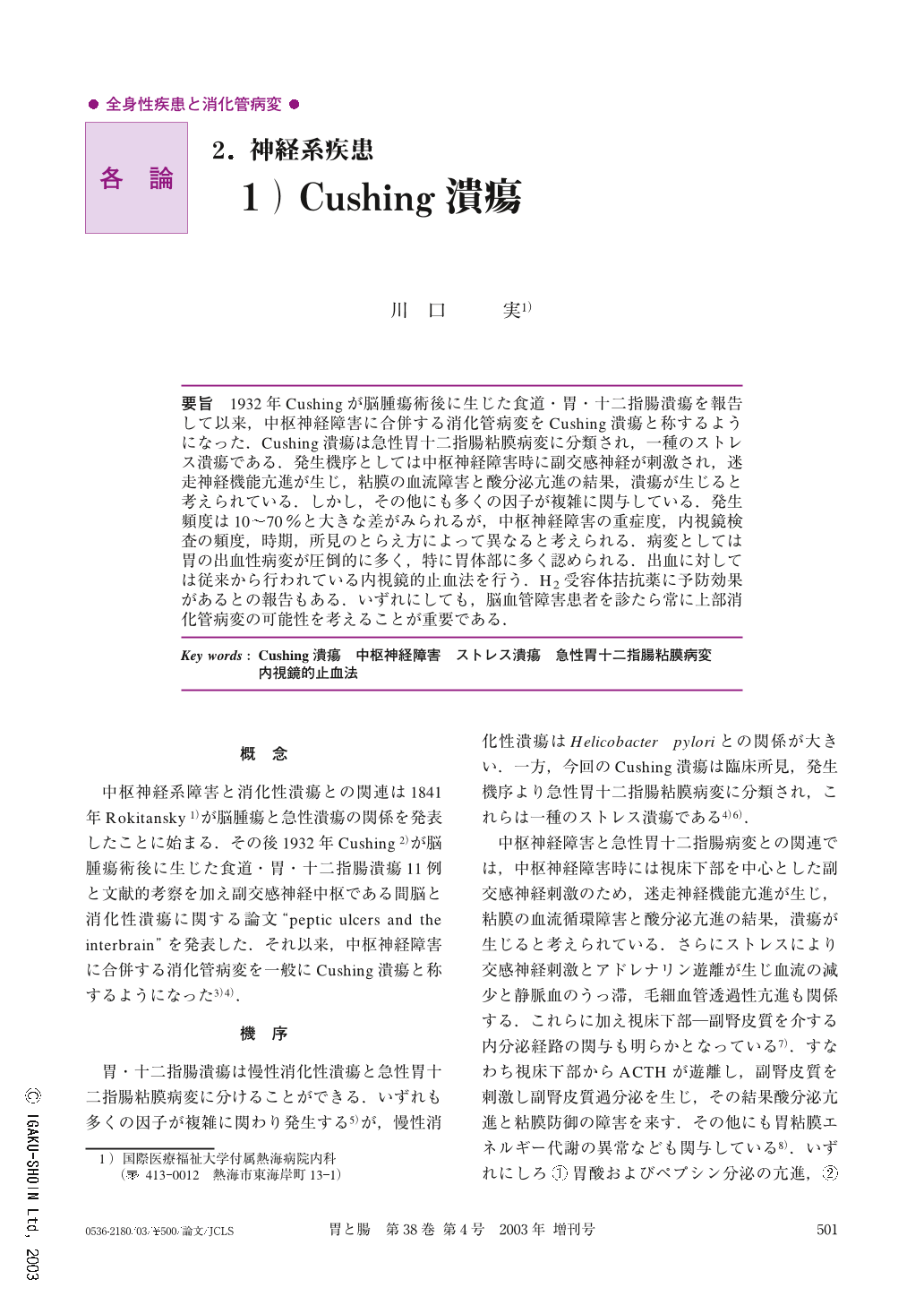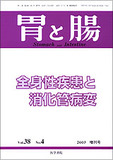Japanese
English
- 有料閲覧
- Abstract 文献概要
- 1ページ目 Look Inside
- 参考文献 Reference
- サイト内被引用 Cited by
1932年Cushingが脳腫瘍術後に生じた食道・胃・十二指腸潰瘍を報告して以来,中枢神経障害に合併する消化管病変をCushing潰瘍と称するようになった.Cushing潰瘍は急性胃十二指腸粘膜病変に分類され,一種のストレス潰瘍である.発生機序としては中枢神経障害時に副交感神経が刺激され,迷走神経機能亢進が生じ,粘膜の血流障害と酸分泌亢進の結果,潰瘍が生じると考えられている.しかし,その他にも多くの因子が複雑に関与している.発生頻度は10~70%と大きな差がみられるが,中枢神経障害の重症度,内視鏡検査の頻度,時期,所見のとらえ方によって異なると考えられる.病変としては胃の出血性病変が圧倒的に多く,特に胃体部に多く認められる.出血に対しては従来から行われている内視鏡的止血法を行う.H2受容体拮抗薬に予防効果があるとの報告もある.いずれにしても,脳血管障害患者を診たら常に上部消化管病変の可能性を考えることが重要である.
Since 1932, when Cushing first reported on esophagogastroduodenal ulcers following brain-tumor surgery, gastrointestinal lesions accompanying central nervous system disorders have been referred to as Cushing ulcers.
A Cushing ulcer is classified as an acute gastroduodenal mucosal lesion and is a type of stress ulcer.
As for its onset mechanism, a disorder of the central nervous system stimulates the parasympathetic system and induces vagotonia, and due to the subsequent mucosal circulation disorder and increased acid secretion, ulceration occurs. However, many other factors are also involved and interact in a complicated manner.
The incidence of Cushing ulcers ranges widely, from 10% to 70%, and diagnosis can vary greatly depending on the severity of the disorder of the central nervous system, on the frequency and timing of endoscopy, and on the interpretation of endoscopic findings.
Gastric hemorrhagic lesions account for an overwhelming majority of Cushing ulcers, and these ulcers often develop in the body of the stomach.
In accordance with past practice, hemorrhagic ulcers are treated by endoscopic hemostasis.
Several studies have found that H2 receptor antagonists can prevent the onset of Cushing ulcers.
In any case, it is important to consider the possibility of upper gastrointestinal lesions in patients with cerebrovascular disease.

Copyright © 2003, Igaku-Shoin Ltd. All rights reserved.


